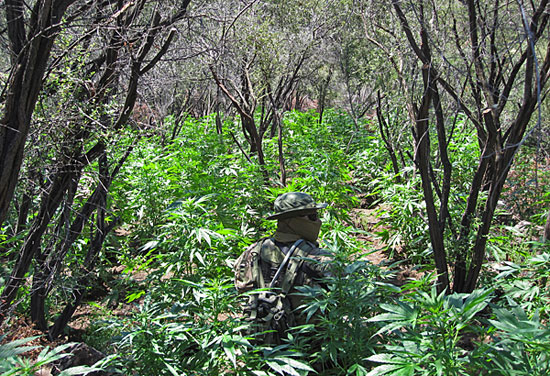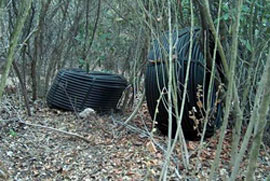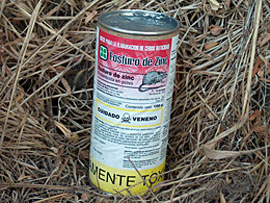A budding environmental menace
September 5, 2013
In the not-so-remote reaches of the Santa Monica Mountains, the scientists of the National Park Service are getting an unexpected and sometimes unnerving education in preserving the environment—and in protecting themselves. They’ve been forced to confront realities in the wild that could even make counting newts along a stream a risky affair.
Increasingly, park service researchers are sharing terrain with covert marijuana farmers who’ve exploited and wreaked alarming environmental damage on broad swaths of sensitive public lands as part of a multi-million-dollar trade possibly linked to Mexican cartels. With tightened security along the border, drug lords may have turned to the rugged mountains edging the L.A. basin for their cash crop.
Just last week, a pot farm was raided in Topanga State Park, one of the region’s most popular hiking destinations. Law enforcement authorities recovered 5,000 pounds of mature plants, worth an estimated $2.5 million, and removed 500 pounds of trash, camping gear and farming infrastructure. But that bust wasn’t even the largest in a series of seizures that have made headlines during the past few years, including some in the hills above Malibu.
Christy Brigham is no cop. But as chief of planning, science and resource management for the National Park Service in the Santa Monica Mountains National Recreation Area, she and her colleagues have learned to spot potential dangers and react to them, even if that means revamping long-planned research projects.
Take, for example, the red-legged frog. Brigham says the park service has been trying to reintroduce the endangered amphibian in streams across the Santa Monica Mountains. But a number of suitable sites, she says, were rejected because they had a high potential for pot farming or showed actual evidence of it, including the tell-tale black, flexible tubing that’s used to siphon stream water for irrigation of the illicit crops.
“If you had told me ten years ago that one of the things I would be doing is finding illegal marijuana gardens, I would have laughed,” Brigham says. “That’s not what I do. I’m a scientist. But you have to learn as a coping skill to identify the signs of illegal growing and respond appropriately. You try to get out of there as quickly and as quietly as possible.
“The even crazier part,” she adds, “is that not only are we identifying marijuana gardens but we’ve learned to quantify their environmental impacts so we can help the public understand how big a problem it really is.”
The damage is occurring across a number of fronts, Brigham explains, creating “a terrible ecological disruption” on lands that are supposed to be protected for public enjoyment and education.
Start with the water. Pot growers are damming low-running streams with rocks and siphoning the pooled water for distances that can stretch as far as a mile to hidden plots containing thousands of plants. Brigham says this may be endangering native stream creatures, including steel head trout, whose dwindling numbers environmental scientists have been working hard to reverse in the Santa Monica Mountains.
Then there are the nitrogen-based fertilizers that foul the creek and the rat poison that growers deploy to protect their crops from hungry critters but that moves through the food chain, jeopardizing bobcats and other large mountain mammals.
Meanwhile, the streams are further damaged by the loose soil that flows into them after growers clear wide patches of native vegetation to plant rows of seeds. Brigham says the heavy silt in the water can fill the holes of native frogs and “suffocate” fish eggs dependent on clear, oxygenated water to develop.
But the most obvious environmental toll, Brigham says, comes from the growers themselves, who live at the sites and use the land as their trash can and toilet, which scientists believe could be one factor contributing to the high bacteria levels in the ocean at the mouth of Topanga Creek.
“It’s just horrible,” Brigham says. “It’s like having a dump in the park, which is not really what we’re working toward.” She says the makeshift camps also represent a danger to hikers—and those on her staff—who like to wander off-trail along the streams. Her advice: when you see those irrigation hoses, “it’s time to leave.”
Too often, Brigham says, news of big marijuana hauls on public lands seems to lead to a discussion about whether taxpayer money is being wasted by such law enforcement efforts. But she says there’s no arguing about the cost to the environment.
“Regardless of how you feel about whether marijuana should be legalized, that debate is completely irrelevant to the environmental issue,” Brigham says. “You’ve devoted your tax dollars and your attention to these parks. They are not farms. This completely disrupts the ecology of the area. It’s terrible.”
Posted 8/22/13















 405 bridge work causes a stink
405 bridge work causes a stink
